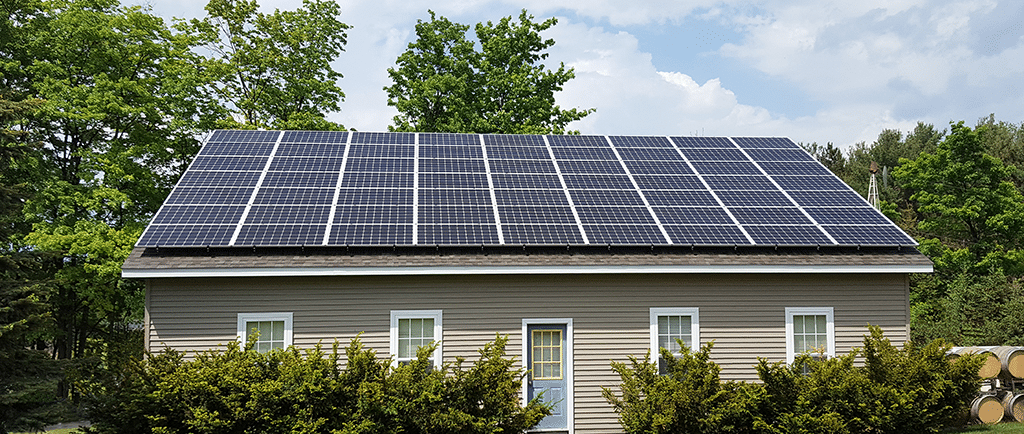There is broad consensus that the transition to clean energy is going to require lots more energy storage than we have today. How exactly that should happen is less clear. A handful of states have set storage procurement targets of varying ambition. At the federal level, the Inflation Reduction Act has created the biggest incentives for storage yet, but more work needs to happen at the state level. State policy will ensure that storage investments spurred on by the federal legislation happen at a big enough scale and quick enough pace to match the deployment of renewable energy needed to meet emissions reduction targets.
The Michigan Legislature recently introduced some of the boldest state-level policies for energy storage in the entire country. Passing these bills would make the state among the most ambitious in the Midwest when it comes to growing storage capacity and encouraging business models that unlock the full potential of this technology, like the “virtual power plant” model.
The first bill, HB 4256 would establish a state-wide target of 2,500 MW of grid-scale energy storage by 2030 and require utilities to achieve that goal by competitively procuring storage systems. These targets would set Michigan on a path to achieve the emissions reduction timeline set by Michigan Governor Gretchen Whitmer’s MI Healthy Climate Plan. That plan aims to reduce the state’s greenhouse gas emissions by 28% below 2005 levels by 2025 and 52% by 2030 and ultimately achieve economy-wide carbon neutrality by 2050.
A separate set of bills, HB 4839 and HB 4840, would stimulate the market for behind-the-meter generation, help consumers make the decision to install their own storage systems and increase access to backup power for low-income customers who experience the worst consequences of rolling blackouts and power outages. One bill would provide rebates to residential electric customers who install rooftop solar and behind-the-meter storage systems, including extra support for low-income households. The other bill would require the development of statewide programs to create virtual power plants.
Virtual power plants are created by aggregating resources such as behind-the-meter customer solar and storage. On their own, these devices empower customers to generate and store their own power, ensure backup power, and save on their electricity bills. Bundled together through virtual power plants by the hundreds or thousands, these devices become even more powerful. They can be called upon to supply vast amounts of power to the grid to reduce peak energy supply constraints and add reliability to the grid, reducing costs for all ratepayers.
The recently introduced energy storage bills will collectively serve as a model for other states. The amount of storage HB 4256 targets would be transformative, especially for a state in a region of the country that has not deployed as much storage as elsewhere–there is only about 78 MW of utility-scale battery storage capacity in the region of the Midcontinent Independent System Operator, the grid operator for most of the Midwest including Michigan, compared to 317 MW in the region of the New England Independent System Operator and 295 MW in the region of the Mid-Atlantic grid operator PJM, according to the most recent U.S. Energy Information Administration data.
The residential storage bills would also help Michigan catch up to other regions of the country when it comes to behind-the-meter storage at homes and businesses. Utility customers in states from California to Texas have been able to receive compensation for their home storage systems by enrolling their systems with other distributed energy resources in a local area as aggregated virtual power plants.
The fact that these proposals surfaced in Michigan is particularly significant. The only Midwestern states that have enacted storage-related policies are Illinois, Minnesota and Missouri, according to the Pacific Northwest National Laboratory’s Energy Storage Policy Database.
Michigan is also facing significant electric reliability challenges. If this legislation passes and makes the state a leader in energy storage development, it can also be a model for other states seeking to improve distribution grid reliability. Michigan has long been one of the worst-performing states for reliability, and recent severe power outages following an ice storm illustrate this vulnerability. Lawmakers are calling for investigations into the major utilities’ stewardship of the grid, while the largest utility in the state, DTE Energy, is proposing some of its biggest rate increases ever to try to cover the costs of more grid maintenance. Storage, however, can make the grid more reliable and resilient while deferring the need for utilities to perform as many expensive grid upgrades, ultimately saving money for ratepayers. The Michigan Department of Environment, Great Lakes and Energy’s (EGLE) Energy Storage Roadmap, the document that informed the storage targets found in both the MI Healthy Climate Plan and the new legislation, identified several benefits from storage relevant to reliability: transmission congestion relief, distribution upgrade deferral, shaving demand to help meet peak load requirements and enabling virtual power plants.
To confront Michigan’s reliability and resiliency challenges, several things need to happen. First, low-income customers who are hit the hardest by power outages need to be provided with affordable options to purchase solar plus storage systems. HB 4840 would provide this much-needed assistance. Second, customers who are interested in installing storage for the sake of making their homes or businesses more resilient need to have assurances that if they install such a system, they can utilize those assets to their maximum potential, justifying the up-front costs. HB 4839 would ensure that customers are compensated for any benefits they provide to their neighbors, the grid and the utilities.
Third, as more of the state’s electricity is generated by renewables, utility-scale storage is becoming increasingly important to ensure that power is always available. HB 4256 would help preserve Michigan’s long-term electric reliability by making utility-scale storage more readily available wherever it is needed.
Finally, Michigan needs more storage that can discharge energy for longer periods. HB 4256 has a provision that could help encourage new technologies to meet the long-duration storage needs that are so critical for grid decarbonization goals. The provision requires the Michigan Public Service Commission to complete a study to determine how much long-duration energy storage is needed in Michigan and to establish targets to procure the needed long-duration storage.
U.S. Energy Secretary Jennifer Granholm recently described Michigan as a “hotbed” for clean energy development. The state’s role in the electric vehicle space is known, but these bills would grow Michigan’s standing as a hotbed for battery storage and distributed energy.

Laura Sherman is president of Michigan Energy Innovation Business Council (EIBC), a trade organization that represents renewable energy developers and related companies working in Michigan.
The views and opinions expressed in this article are the author’s own, and do not necessarily reflect those held by pv magazine.
This content is protected by copyright and may not be reused. If you want to cooperate with us and would like to reuse some of our content, please contact: editors@pv-magazine.com.








Before forcing utility consumers to pay for more solar farms on remote farmland & natural wild-land habitat that requires utility transmission to cities & towns, let’s incentivize leased commercial & residential property owners to install solar canopies with on-site storage batteries & Vehicle-2-Grid chargers shading their acres of parking lots…..everywhere. Add renewable power production & storage right where most demand is located, on ridiculously under-utilized parking lot land. This is a rapidly exploitable, local Net Zero solution that can be approved by local building officials with little if any neighborhood opposition.
Reduce utility & transportation costs for owners, employees & tenants of large apartment & condominium developments, neighborhood shopping centers, business parks, hospitals, schools & other public facilities. Shade enormous asphalt heat islands. Build a matrix of reliable networked neighborhood micro grids. Widely distributed, cheap, reliable neighborhood power production & storage instead of exclusively remote, unreliable utility monopoly power.